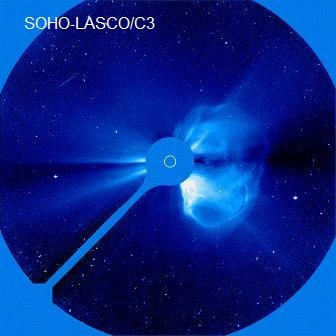
|
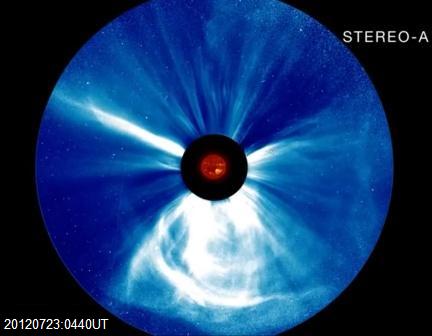
|

|

|
CORONAL MASS EJECTIONS
The term coronal mass ejection can refer to the process whereby a large quantity of material is ejected from the solar corona into the interplanetary medium or it can refer to the cloud of ejected matter. It is the latter definition that is generally meant when the abbreviation CME is used.
CME's have been studied seriously since around 1970 when the first coronagraphs were lofted above the Earth's atmosphere. One of the CME parameters of most interest is the amount of material or mass carried in the CME. Estimates of this mass are now routinely carried out by the use of photometry whereby the integrated brightness of the CME is measured and used to calculate the mass. This method will be described below.
Following this a simple geometric method will be presented which can be used to give a rough order of magnitude estimate of CME mass.
CME PHOTOMETRY
A CME is visible in white light due to scattering of solar photospheric light by free electrons in the CME plasma. The brighter the CME, the greater the number of free electrons and thus the greater the number of positive ions and mass of the plasma.
The standard method to determine the mass of a CME is by photometry of a white-light coronagraph image of the CME. The steps in this process are:
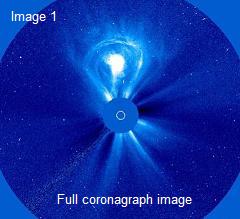 |
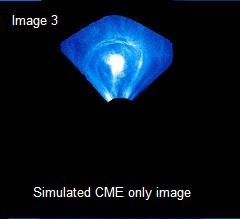 |
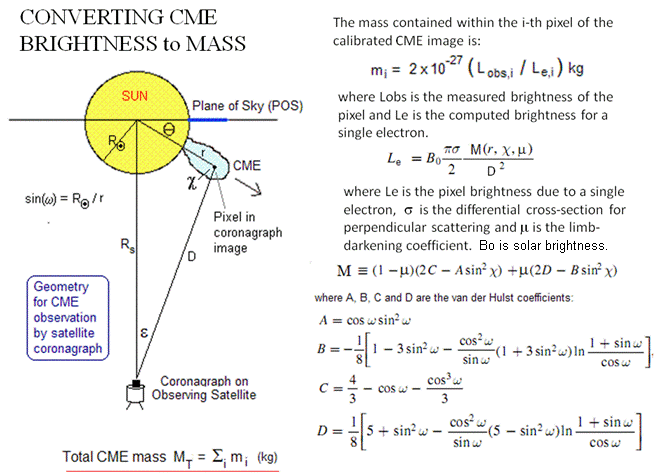
The coronagraph image calibration together with the above calculations
are normally carried out using software tools available from the organisation that supplies the coronagraph images. For the LASCO images there is an analysis package called 'LASCO Solarsoft' that is available from NASA Goddard.
A SIMPLE GEOMETRIC MASS CALCULATION
It is also possible to perform a rough order of magnitude estimation of a CME mass using only geometric ideas together with a knowledge of coronal particle density near Earth orbit (but outside the Earth's magnetosphere).
The details on how to do this are shown in the figure below. Note that the CME illustrated here is a very large CME. However, the calculations can be applied to any size CME. Although we can look at a coronagraph image and estimate the CME size, we do not have an estimate for the CME particle density just after ejection from the Sun. It is thus necessary for us to use a simple scaling relation to compute the CME size near Earth orbit < Coronal Mass Ejections >.
Note that the sizes shown in this diagram (Sun, CME in both positions and distance from Sun to Earth are roughly to scale.
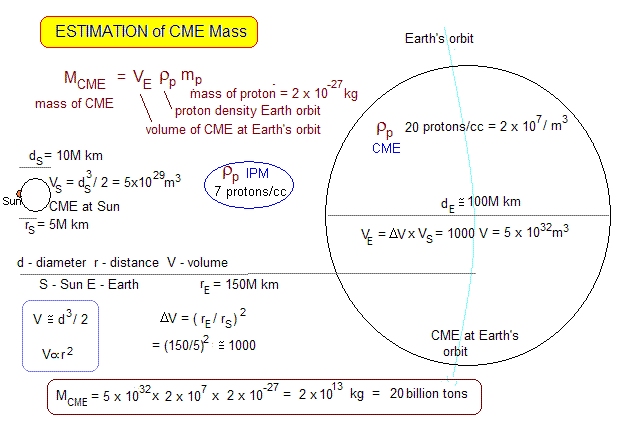
REFERENCES
 Australian Space Academy
Australian Space Academy